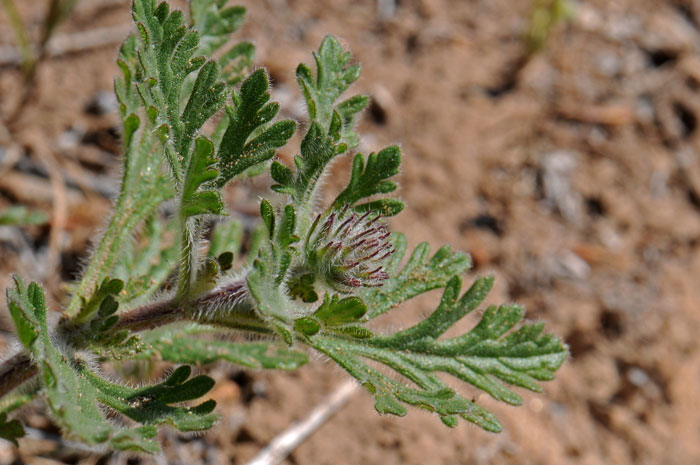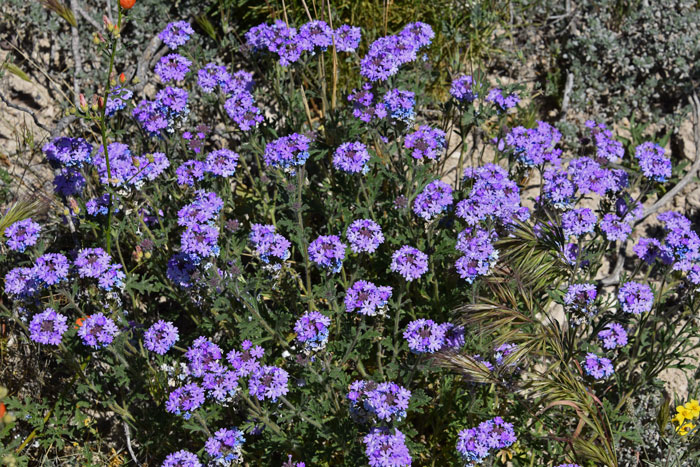Glandularia bipinnatifida, Dakota Mock Vervain




Scientific Name: Glandularia bipinnatifida
Common Name: Dakota Mock Vervain
Also Called: (Spanish: Verbena)
Family: Verbenaceae, Verbena or Vervain Family
Synonyms: (Glandularia bipinnatifida var. brevispicata, Glandularia wrightii, Verbena ambrosiifolia, Verbena bipinnatifida, Verbena bipinnatifida var. brevispicata, Verbena bipinnatifida var. latilobata, Verbena ciliata, Verbena ciliata var. pubera, Verbena pubera, Verbena wrightii)
Status: Native
Duration: Annual.
Size: Up to 12 inches or more.
Growth Form: Forb/herb; plant stems with fine pubescence.
Leaves: Green; opposite; margins simple deeply divided or pinnatifid; leaf surfaces with fine pubescence.
Flower Color: Pink, purple, violet; showy flowers in rounded clusters; flowers bilaterally symmetrical; sepals 5; fruit a nutlet.
Flowering Season: May to September; March to October in Texas.
Elevation: 5,000 to 10,000 feet.
Habitat Preferences: Often in open coniferous forests, open grassy areas.
Recorded Range: Glandularia bipinnatifida, in the United States, is found in the central and southern states in: AL, AR, AZ, CA, CO, GA, IN, KS, KY, LA, MD, MO, MS, NE, NM, OK, SD, TN, TX, WI, WY. It is also native to northern Mexico. In Arizona it occurs throughout most of the state with few or no records in La Paz, Pinal and Yuma counties.
North America & US County Distribution Map for Glandularia bipinnatifida.
U.S. Weed Information: No information available.
Invasive/Noxious Weed Information: No information available.
Wetland Indicator: No information available.
Threatened/Endangered Information: No information available.
In the Southwestern United States: Arizona has 5 species of Glandularia, in California there are 3 species, Nevada has 1 species, New Mexico has 8 species, Texas has 10 species, Utah has 2 species. All data is approximate and subject to taxonomic changes.
There are 2 varieties in Glandularia bipinnatifida;
Glandularia bipinnatifida var. bipinnatifida, Dakota Mock Vervain, (AL, AR, AZ, CA, CO, GA, IN, KS, KY, LA, MD, MO, MS, NE, NM, OK, SD, TN, TX, WI, WY);
Glandularia bipinnatifida var. ciliata, Davis Mountain Mock Vervain, (AZ, CO, NE, NM, OK, TX).
Comments: Glandularia bipinnatifida looks very similar to Southwestern Mock Vervain, Glandularia gooddingii but Dakota Mock Vervain has deeply divided or dissected (bipinnately) leaves. The differences between these 2 species is difficult to determine because of the extreme variation in the shape of the leaves in both species.
Glandularia bipinnatifida was previously classified as Verbena bipinnatifida, and they are very closely related to the genus Verbena.
In Southwest Desert Flora also see Southwestern Mock Vervain, Glandularia gooddingii.

